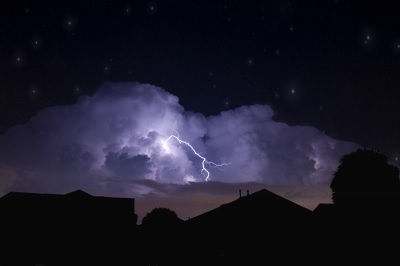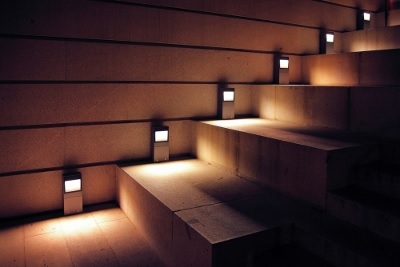Should I be going solar?
Can I get solar panels for free?
This section is the place to start researching
Should I be going solar?
Usually the answer to this is “yes”. The price of solar panels has dramatically dropped in the past few years and it’s never been cheaper to go solar.
Solar generally saves you money, adds value to your home and is good for the environment.
There are some pitfalls you can avoid so keep reading on so you can make the best decision when going solar.
The basics of grid connect solar
Solar panels generate electricity when the sun shines on them and they produce DC electricity. This is converted into 240 V AC power by an inverter so it can be used in your home.
The conversion of DC to AC electricity is the job of the inverter.
When the sun is shining, the solar electricity generated by your solar system is used to power appliances in your home or business.
At night time or on cloudy days, your power comes from the main electricity grid.
When you generate more solar power than you are consuming, the excess power is fed back to the grid and you are paid for that power.
A solar meter records how much electricity you import and export.
Can I get Solar for Free?
Well… no.
However it gets pretty close to being as good as free in some situations.
For example, a 6kW solar system that costs $6,400 can save you around $2,400 per year in Adelaide.
There are assumptions in coming up with an annual $2,400 saving, however, it is possible to save this amount.
Let’s say you manage to finance your $6,400 solar system on four years interest free with a $0 deposit.
Then your solar system finance is costing you $1,600 per year, but you are saving $2,400 per year off your electricity bill.
So the choice is yours!
1) Keep paying $2,400 per year. That’s $24,000 over 10 years!
or
2) Pay $1,600 for four years and then $0.
Some punters out there call this “Cash Flow Positive Solar”
What does it cost to go Solar?
A 6kW solar system is usually made up of 20 panels and an inverter.
When buying solar, there is a fairly large price range.
A 6kW solar system for example can vary from $3,500 (low quality – not recommended) to $10,000 (high quality).
So it’s a really good idea to get 3 Quotes.
For a good quality 6kW solar system, expect to pay around $6,000. You can option this up by adding micro-inverters, panel maximisers or by using higher quality panels from well known brands in the industry such as SunPower, LG or even Australian made panels from Tindo Solar.
So why does the price vary so much? At the bottom end of the price bracket, you can expect the solar company is cutting corners on quality with the solar panels, inverters and framing.
A low price may also place pressure on the installation team to get the job done as quickly as possible. A rushed installation can result in problems down the track. And if the business model of the company is cheap, then after sales service is probably going to be non existent.
Solar is going to be on your roof for a long time. So go for quality. And get 3 quotes.
Make sure you get a site inspection and multiple quotes before signing up. Sometimes your switchboard or your roof may need upgrading and you don’t want any nasty surprises when the installers turn up site unseen.
What size Solar system should I buy?
Unfortunately sizing a solar system does not have a simple answer.
It’s complicated!
You can take the simple approach of installing as many panels as you can fit. Down the track you will likely need the solar panels for charging an electric car or a battery bank.
The average system out there is around 6.5kW so that’s also a good guide to use.
It is highly recommended to get a solar professional to come to your home and analyse your power bill, roof pitch, orientation and shading so you can have a professionally sized solar system.
Will my Solar system work in a blackout?
No – your solar system will not work during a blackout.
This is because you may electrocute someone working on the electricity grid.
If your solar system continued to generate power during a blackout, and the solar energy wasn’t being used inside the home, then the surplus electricity will be fed into the main electricity grid and this would electrocute a person working on the grid.
For a solar system to work during a blackout, you need to add a special type of battery backup system to your solar system.
.
How long does it take to install a Solar system?
Installation of a 20 panel solar system usually takes no more than one day. Complicated installations with two storey houses, steep roofs, cathedral ceilings and so on can add to the time and cost of install.
How Much Money Can I Save Going Solar?
The savings and paybacks for solar are as good as they have ever been!
Paybacks can be as good as 3 to 5 years.
Every time your electricity company puts up the cost of power, your payback just got even better.
Calculating how much money can be saved by installing solar unfortunately isn’t as straightforward as it could be.
Here are the factors that are at play:
1. The amount you pay when buying electricity from the grid
The more expensive electricity gets, the more your solar system will effectively save you.
Let’s say you are using 10 kWh of electricity a day from your solar system rather than buying it from the grid. If the price of electricity is 40c per kWh, then you will save $4 a day. If the price of electricity from the grid is 45c per kWh, then you will save $4.50 a day.
2. The amount you get when selling electricity into the grid
The more your energy retailer pays for the exported solar electricity you sell to them, then the more you save.
Let’s say you are exporting 5 kWh a day from your solar system. If your energy retailer pays you 10c per kWh, then you will get paid 50c a day for your exported electricity. If your energy retailer pays you 15c per kWh, then you will get paid 75c a day.
3. Where your system is located in Australia
This is pretty simple to understand. If you live in Tasmania, you get less sunshine compared to Perth. So your solar system will generate less electricity or less kWh per year in Tassie.
4. How much of the solar energy you generate is directly consumed, and how much surplus is sold to the grid
The amount you get for selling power back to the grid is usually less than the amount you pay for electricity you use from the grid. So ideally you want to consume all the power your solar system generates and not buy anything from the grid. However this is not practical.
A good performing 6kW solar system in Adelaide will generate on average around 24 kWh per day. In one year, that equates to 8,760 kWh. If 50% of the 8,760 kWh is consumed and 50% sold to the grid, then the savings can be something like:
50% of 8,760 = 4,380 kWh consumed at 40c/kWh = a saving of $1,752
50% of 8,760 = 4,380 kWh exported at 15c/kWh = a saving of $657
Total amount saved is $2,409
Now let’s say that you manage to consume 65% of your energy (because you use more electricity when the sun is shining instead of using electricity at night). The numbers look like this:
65% of 8,760 = 5,694 kWh consumed at 40c/kWh = a saving of $2,278
35% of 8,760 = 3,066 kWh exported at 15c/kWh = a saving of $460
Total amount saved is $2,738
.
Can I go “Off The Grid”?
Sure it is possible to go off the grid. It is pretty expensive as you need a very big solar system and big battery system to get you through winter.
In summer, a solar system will generate 3x more electricity than in winter. So to get through winter you need to install a solar system that is 3x bigger than what you generally need in summer.
Batteries also get quite expensive. You need to oversive batteries three to five times to get you through cloudy days.
You also need to buy an auto-starting diesel generator. This is for backup when the batteries go flat. The generator needs maintenance and regular running and testing so you are sure it is ready to use when you need it.
When you add up these extra items, it usually only makes sense to disconnect from the grid totally if your home has a very expensive grid connection. Usually people decide to go with an off grid system for a small house if their grid connection costs are over $50,000.






